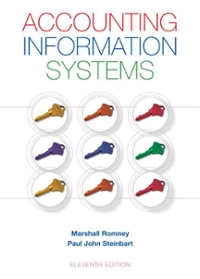As an internal auditor for the state auditors office, you are assigned to review the implementation of
Question:
Under the new system, welfare applicants enter data on the agency’s Web site or give their data to clerks, who enter it using online terminals. Each applicant record has a “pending” status until a welfare examiner can verify the authenticity of the data used to determine eligibility. When the verification is completed, the examiner changes the status code to “approved,” and the system calculates the aid amount.
Periodically, recipient circumstances (income, assets, dependents, etc.) change, and the database is updated. Examiners enter these changes as soon as their accuracy is verified, and the system recalculates the recipient’s new welfare benefit. At the end of each month, payments are electronically deposited in the recipient’s bank accounts.
Welfare assistance amounts to several hundred million dollars annually. You are concerned about the possibilities of fraud and abuse.
a. Describe how to employ concurrent audit techniques to reduce the risks of fraud and abuse.
b. Describe how to use computer audit software to review the work welfare examiners do to verify applicant eligibility data. Assume that the state auditor’s office has access to other state and local government agency databases.
Fantastic news! We've Found the answer you've been seeking!
Step by Step Answer:
Related Book For 

Question Posted:





